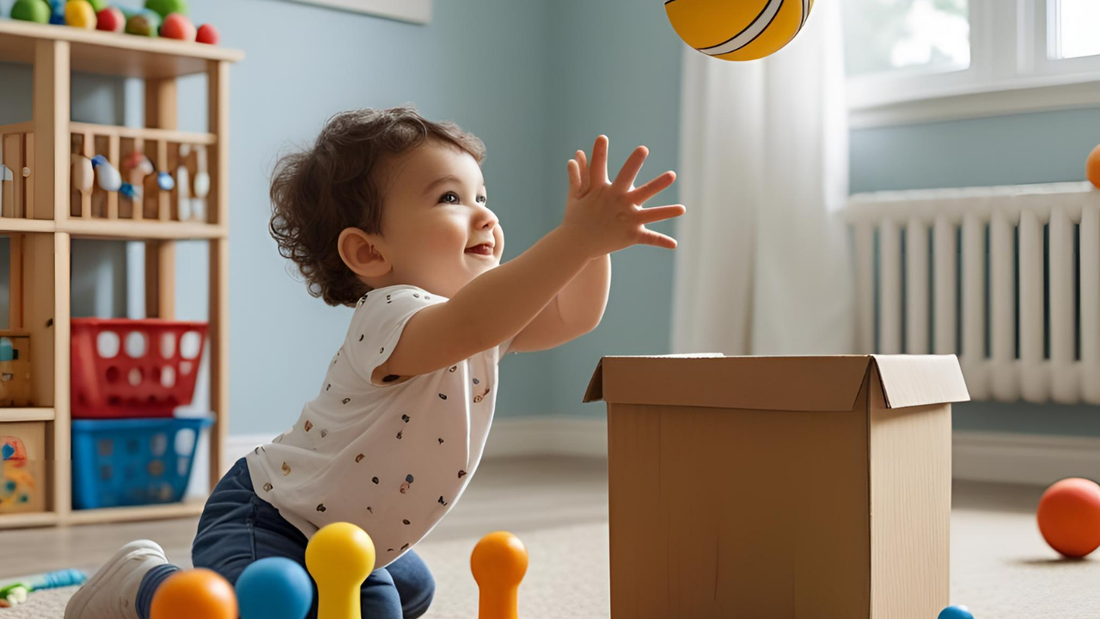
7 Ways That Boost Eye-Hand Coordination (Without Your Kid Even Noticing)
LiLLBUDEver watched your child try to fit a block into a shape sorter, thread a bead onto a string, or aim a ball into a basket? That moment of intense focus? It’s more than just play - it’s eye-hand coordination in action.
And it matters a lot.
What is Eye-Hand Coordination, and Why Does It Matter?
Eye-hand coordination is the ability to track visual input with the eyes and use the hands to perform a task accurately. It is a secret behind everyday milestones like building towers, doodling, using a spoon, trying to catch a ball, and later comes writing and tying shoelaces.
Boosting this skill early sets your child up for success in both academics and active play.
The best part? Structured lessons and flashcards are not required. All you need are the right toys that, through joyful, hands-on experiences, naturally strengthen these abilities.
Let's examine the top toys for enhancing children's hand-eye coordination, including some that strike the ideal balance between entertainment and utility.
1. Shape Sorters and Nesting Toys
These classic toys are crucial for toddlers learning to align the movements of their hands with their vision. By having them stack cups in the right order or insert the right shape into the right hole, shape sorters teach them visual discrimination, spatial awareness, and accuracy.
Try: LiLLBUD Shape Surprise Box with its chunky, manageable pieces, this modern take on a classic is ideal for improving fine motor skills and coordination.
2. Lacing Beads and Threading Sets
Despite its apparent simplicity, threading a bead onto a string is a significant developmental milestone. Children must visually guide the string through a small opening in order to play with these toys, which is an ideal test of bilateral movement and eye-hand coordination.
3. Building Blocks & Construction Sets
Children rely on vision and spatial judgment to arrange and place block pieces during block stacking and toy assembly processes. Each piece positioned with precision builds coordination alongside logic and perseverance in children.
Try: LiLLBUD Stack and Sort- Peg Board that offer construction without small choking hazards.
4. Ball Games and Target Play
The development of hand-eye coordination requires ball play because it teaches timing and depth perception and reaction time through activities that range from ball rolling to foam dart targeting.
Try: LiLLBUD Toss and Play - Crochet Balls Set to practice basket targets, practice catching.
5. Puzzle Toys with Pegs or Knobs
The process of solving puzzles assists children in developing hand-eye coordination and problem-solving abilities through shape matching and piece rotation and precise arrangement tasks. Knobbed puzzles serve as beginner tools but interlocking jigsaws present suitable challenges for older children.
Try: LiLLBUD Fit the Shapes Puzzle wooden peg puzzles designed for toddlers to master grasp and placement.
6. Play Dough and Tool Kits
Through sculpting and rolling dough children develop hand strength while following visual patterns and line formations. Creating with both hands provides an additional benefit of developing bilateral coordination.
Try: Safe cutters, rollers, and stamps for guided creativity in dough sets.
7. DIY Activities That Double as Eye-Hand Training
Not every toy has to be packaged. Visual-motor coordination can be strengthened just as well with easy at-home activities like sticker play, pom-pom drop games, or threading pasta on straws.
Try transferring cotton balls with kitchen tongs or making a game of colour sorting with paper cups and pom-poms.
What to Look for in Toys That Build Eye-Hand Coordination
- Possibilities for unstructured play
- Chances to match, aim, twist, or manipulate pieces
- Instruments that need both hands to cooperate
- Age-appropriate difficulty (not frustrating, just challenging)
Maintain a variety of tabletop activities and toys that require movement to help your child develop both fine and gross motor skills.
Final Thoughts: Play Smart, Grow Strong
Reaching milestones is only one aspect of developing eye-hand coordination; another is empowering your child to engage with their environment. This process feels effortless with the best toys. With each motion, they captivate your child, encourage repetition, and develop skill after skill.
Allow them to sort, stack, thread, and aim. Every catch match, puzzle solved, and block stacked represents a step closer to improved coordination and increased self-reliance. They just turned your toy shelf into their own training ground.

